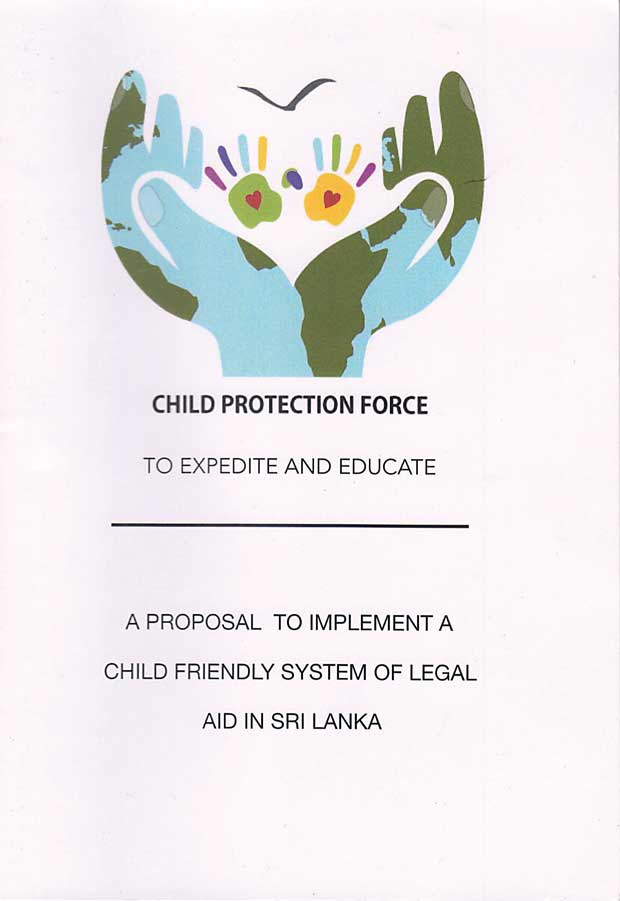Reply To:
Name - Reply Comment
Last Updated : 2024-04-19 08:50:00
Broadly speaking, children can encounter the law in three ways: as criminals, as perpetrators, and as witnesses. That there are problems in our justice system stems partly from the fact that we refuse to accommodate those children as children with respect to these categories. Even though we do treat them differently, at the end of the day they tend to find our courts and processes difficult and overwhelming.
Our collective refusal to identify and treat children for who they are is reflected in the  almost contradictory attitude the law has taken towards them. Consider how, for instance, their age limits are set when they are tried as perpetrators. A person is said to be criminally responsible only if he or she has attained or passed the age of 8 (as set out by the Penal Code of 1883). A judge has the discretion to try a person as a criminal if he or she is between the ages of 8 and 12, if that judge can ascertain whether he or she has attained a sufficient level of maturity and understanding as to the consequences of a particular course of conduct. Those between 12 and 16 can be held as criminally accountable even if it, that point, is not conclusively ascertained, while those between 16 and 18 are regarded as adults. (However, no one below the age of 18 can be sentenced to death.) Not exactly helpful or consistent, is it?
almost contradictory attitude the law has taken towards them. Consider how, for instance, their age limits are set when they are tried as perpetrators. A person is said to be criminally responsible only if he or she has attained or passed the age of 8 (as set out by the Penal Code of 1883). A judge has the discretion to try a person as a criminal if he or she is between the ages of 8 and 12, if that judge can ascertain whether he or she has attained a sufficient level of maturity and understanding as to the consequences of a particular course of conduct. Those between 12 and 16 can be held as criminally accountable even if it, that point, is not conclusively ascertained, while those between 16 and 18 are regarded as adults. (However, no one below the age of 18 can be sentenced to death.) Not exactly helpful or consistent, is it?

And if this wasn’t confusing enough, there was another attempt at a classification made, this time by the Children and Young Persons Ordinance (or CYPO) which stated that children were individuals below the age of 14, and young persons were those between the ages of 14 and 16. In 1998 a study by the Lawyers for Human Rights and Development (LHRD) concluded that this double classification could in the long run explain the confused state of our juvenile justice system. Taken in itself, the argument is tenable; if we can’t set down the age limits of a child in legal terms, how are we to determine if a child is a child and, in individual circumstances, how he or she should be treated, whether as criminals or victims or even witnesses?
The Child Protection Force has as its main objective the implementation of a system of child friendly Legal Aid. Makes sense. A perusal of the very many instances of injustice and disproportionate punishment meted out to our children
The problems are there for all to see, clearly. So what are the solutions? If at all, is there one particular way through which the shortcomings of the law with respect to juveniles can be ameliorated, if not done away with completely? The Child Protection Force, which I dwelt on at some length in last week’s column, seeks to combat all those problems, all those shortcomings, by resorting to a juvenile justice system that lives up to its name. A key component of such a system, which by the way is already there in Sri Lanka, is the establishment of juvenile courts. That there already are such courts in this country is certainly welcome. That they are considered to be inadequate and inappropriate, however, indicates that we’ve become complacent over them.
The Child Protection Force has as its main objective the implementation of a system of child friendly Legal Aid. Makes sense. A perusal of the very many instances of injustice and disproportionate punishment meted out to our children, of whom some involve such unspeakably horrifying crimes as genital mutilation, would convince anyone that, as the president himself noted two years ago, the entire nation must bear the overall unconditional responsibility for their protection. Here’s what the CPF souvenir I got, on that Sunday two weeks ago, has to say about the matter:
“... the victimised child or the actor is forced to reckon with the various actors in the criminal justice and public juvenile care system due to being the victim of a crime or carrying out the offence himself/herself. Decisions are made... by different persons who are stakeholders in the system, be the decisions appropriate or not for the circumstance of the individual child. The child is then at the mercy of the actors within the system, until a decision is made regarding his/her fate.”
The tagline, so to speak, of the CPF is spot on in this regard: “To Expedite and Educate.” Expedite, because most court cases involving children (as with most court cases, period) are delayed to such an extent that they become harrowing, turning those children into adults before their time; and Educate, because those actors within our system are unaware of how to make that system more amenable to them. I believe that the latter can come about through a cohesive regime of legal aid, in turn predicated on a  cohesive juvenile justice system. That’s where juvenile courts come into play.
cohesive juvenile justice system. That’s where juvenile courts come into play.
But first: what are juvenile courts? A good starting point would be the socially conscious novels of Charles Dickens, which depicted the horrifying, sometimes gruesome, conditions of labour and life that awaited the wretched and the helpless. From those novels to the establishment of a first Children’s Courts (as they were referred to back then), a key motif that runs through the debate Dickens raised is that there’s a rift between retributive and restorative justice. The latter is aimed at salvaging the criminal, the former at punishing him or her. Of the two retributive is more suited for adults, so once you inflict it on children, not only are you violating Aristotle’s take on equality (comparing like with like, never with unlike), you are also increasing the chances of them relapsing to their earlier habits once retribution has been meted out to them. There’s a term for this, by the way: recidivism.
It’s not really a coincidence that the world’s first Juvenile Court was established, exactly one year before the dawn of the 20th century, in a country that was seeing industrialisation on a scale unparalleled in any other part of the world: the United States, more specifically Illinois. The 18th and 19th had been the centuries of progress and growth, that is, progress and growth at the exorbitant cost of human development. They were predicated on the sustained denigration of the lower orders, of which children figured in significantly: long before the West became liberal champions of juvenile justice in other countries, it procrastinated on its own processes of ensuring the safety and welfare of its own children, its own women.
While the first few decades of the new century saw no real difference between Juvenile and normal Courts, nevertheless the former congealed into a class of their own, guided by one stark principle: for children to be guaranteed justice, either as offenders or as victims, there must not only be the exclusion of features all too common in other Courts (such as the bespectacled, old, and strict judge thrashing his gavel on the table, giving a final determination), but also the inclusion of features that would directly appeal to a child, such as (inter alia) play areas and counsellors. The problem in Sri Lanka, then, is that because of our muddled up definitions of children and their legal parameters, Juvenile Courts were destined to be muddled up as well.
To be sure, this country doesn’t lack statutory provisions when it comes to juvenile justice. The Children and Young Persons Act was enforced around half a century after the enforcement of the Penal Code. It was the CYPA that created Juvenile Courts, with a caveat: unlike most other countries where such Courts exist independently, here they were created within our Magistrate’s Courts. In other words, as per Sections 2 and 3 of the CYPA, Magistrates would be empowered as judges of Juvenile Courts, with the Act defining such judges and their scope of authority and jurisdiction. Obviously, this was hardly adequate, as can be inferred from the fact that, until about five or six years ago, of the more than 70 MCs situated around the country only one, in Bambalapitiya, could be considered as a Children’s Court. The problems that flowed from this were inevitable and deplorable, including inordinate delays.
In 2010, in reaction to calls made by certain concerned authorities, both civil and even within the government, the first JC was established in Battaramulla. Barely a year later, another such Court was built in Jaffna. The importance of these two can’t be discounted. At all. They were needed, not only to try out child offences, but also to ensure that cases involving children were concluded quickly. However certain imperatives for improvement remained: the fact that most cases involving children are never referred to these courts, the fact that the process of hearing cases, no matter how amicable it may be to the child, is preceded by a harrowing, and often unfriendly, process of making complaints and having police officers and other wielders of the law take them down: all too often, the social stigma attached to this is so overwhelming that children sometimes do not report any offence committed against them at all.
It’s not really a coincidence that the world’s first Juvenile Court was established, exactly one year before the dawn of the 20th century, in a country that was seeing industrialisation on a scale unparalleled in any other part of
the world
In the final reckoning, then, why does all this matter? Last week I contended that if we continue with a culture whereby children are made to conflate unconditional deference for authority, we will succeed in creating two kinds of individuals: those who wield the baton and those who resist it. Well, that argument is compounded by another: if we continue with a muddled up legal system based on even more muddled up legal definitions of children, and their age parameters, we will end up contributing to that culture. By neglecting that issue, hence, we will be neglecting our own children.
That’s why I think and believe that the Child Protection Force is doing a commendable job. Legal aid is a veritable method of combating the apathy adults in the legal system exhibit towards those children. As Chandrika Bandaranaike Kumaratunga, at that forum two Sundays back, contended, however, it is not enough. It must be followed by collective action. By everyone. By you and me.

Add comment
Comments will be edited (grammar, spelling and slang) and authorized at the discretion of Daily Mirror online. The website also has the right not to publish selected comments.
Reply To:
Name - Reply Comment
On March 26, a couple arriving from Thailand was arrested with 88 live animal
According to villagers from Naula-Moragolla out of 105 families 80 can afford
Is the situation in Sri Lanka so grim that locals harbour hope that they coul
A recent post on social media revealed that three purple-faced langurs near t